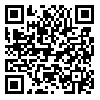Volume 12, Issue 1 (Spring 2025)
johe 2025, 12(1): 34-44 |
Back to browse issues page
Ethics code: IR.KAUMS.NUHEPM.REC.1401.051
Download citation:
BibTeX | RIS | EndNote | Medlars | ProCite | Reference Manager | RefWorks
Send citation to:



BibTeX | RIS | EndNote | Medlars | ProCite | Reference Manager | RefWorks
Send citation to:
Eftekhari Moghadam A, Hannani M, Khajeh Vandi A A, Askarian F. INVESTIGATING THE CORRELATION BETWEEN DEATH ANXIETY AND SAFE BEHAVIORS DURING THE CORONA PANDEMIC AMONG EMPLOYEES OF THE YASUJ AGRICULTURE AND LIVESTOCK COMPANY IN 1401. johe 2025; 12 (1) :34-44
URL: http://johe.umsha.ac.ir/article-1-988-en.html
URL: http://johe.umsha.ac.ir/article-1-988-en.html
1- , Hannani_m@yahoo.com
Abstract: (1304 Views)
Type of Study: Research Article |
Subject:
Safety
Send email to the article author
| Rights and permissions | |
 |
This work is licensed under a Creative Commons Attribution-NonCommercial 4.0 International License. |






